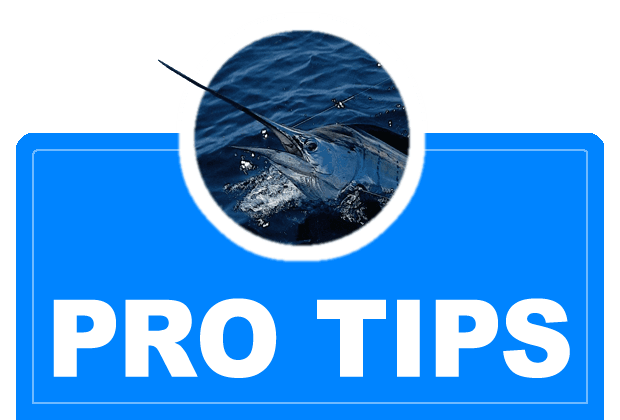Fishing for Mahi-Mahi
Fishing for Mahi-Mahi: Dolphin fish, mahi-mahi or simply mahi is one of the most exciting and most beautiful fish sought by
fishermen venturing out usually ten miles to seventy miles from the beach. They change colors and are
very acrobatic. They are excellent to eat. Let’s discuss where and how we can catch mahi.
Mahi can be caught in the Gulf Stream virtually all summer long off the North Carolina coast. In the
Stream, the most used technique is to troll ballyhoo either skirted or naked. What this means is ballyhoo
is the bait and sometimes a skirt is added to give a flash of color and other times no skirt is used. Trolling
speeds vary, but usually run between six and nine knots. Leaders are typically 100 to 150 pound
fluorocarbon and fifteen feet long. At the end of the rig line, where the main line is attached, is a ball
bearing swivel and on the “meat” end is a 7/0 to 8/0 hook with a nose spring to help hold the bait on the
hook and to help the bait wobble straight while trolling. A spiraling bait is not desirable. Once you have
hooked a mahi and worked him to the boat, the designated leader man will grab the leader and “pull” the
fish to the gaff and subsequently into the cooler. Mahi fish are found, often in large numbers, around
weed lines, floating structure and upwelling structure under the water surface.
For those with smaller boats, mahi can be found much closer to shore during the heat of summer. By the
first of July and sometimes in late June mahi can be caught as close in as ten miles from the beach. Here
techniques and tackle change significantly from those used in the Gulf Stream. In the Stream, you might
use a 30-80 pound class rod and size 50 reel, but “inshore” a 20 size reel and a 12 to 25 pound rod is all
you need. While you can still troll at the same six to nine knots, you can also slow troll (just in gear) or
even drift. Because inshore we usually do not see the weed lines like those in the Stream or other surface
structure, drifting allows the boat to be the structure attracting the mahi. Free line a couple of baits fairly
close in and two baits a bit further out; throw out a few chunks of ballyhoo or menhaden as chum and just
relax. Mahi like surface structure of any kind and your drifting boat becomes the surface structure. Stay
alert while relaxing because you may well hook into a nice king or cobia as well as a mahi. Additionally,
instead of ballyhoo, you can use live bait such as menhaden, bluefish, mullet and pinfish. Another
effective bait for mahi is squid. In fact I like to keep a spinning rod rigged and ready with four feet of
fluorocarbon and a 2/0 J hook tipped with squid or a chunk of ballyhoo to cast out when a mahi is on the
hook on another rod. Almost never is there just one mahi around. Inshore mahi are typically smaller than
those caught in the Stream so have a gaff appropriately sized for the smaller fish.
When preparing mahi for the table, you need to skin them. Some people like to outline the skin with a
sharp knife and pull the skin off while others filet the fish and then filet the skin off. Either way works so
just go at it whichever way you like. Baked or grilled, mahi are great eating!
As always, let me know if I can assist with any details and clarification, and please check back often for
future articles. You are welcome to suggest future topics you would like to see covered. My email is
below.
Capt. Rick Bennett, Ret.
www.rod-man.com
rodman@rod-man.com
A lifetime fisherman, Capt. Rick Bennett, better known as the Rod-Man,has retired from the day to day activities as a charter boat captain but does offer “ON YOUR BOAT” Guided Fishing Trips. Capt. Rick will show you the when, the where and the how. From rod and reel selection to terminal tackle to bait, Capt. Rick has the know how.
- Choosing the right fishing line
- Better Casting Can Mean More Caught Fish
- Saltwater Fishing late May and into June
- Flounder from an Artificial Perspective
- Local Carolina Beach fishing in the month of April
- How to Build Your Own Custom Fishing Rods (Part 5)
- How to Build Your Own Custom Fishing Rods (Part 4)
- How to Build Your Own Custom Fishing Rods (Part 3)
- How to Build Your Own Custom Fishing Rods (Part 2)
- How to Build Your Own Custom Fishing Rods (Part 1)
- Surf Fishing Carolina Beach, North Carolina (Part 2)
- Surf Fishing Southeastern North Carolina (Part 1)
- Exciting shark fishing for everyone.
- “Specialty” Gear for Inshore Fishing
- Fishing for Spanish Mackerel
- Cobia fishing trips and tips, hard fighting, good eating
- Fishing tips on how and where to catch Black Drum
- How to catch Speckled Trout fishing tips and tricks
- How to catch Flounder, flounder fishing tips and tricks
- How to catch redfish, red drum fishing tips and tricks
- Reds and trout and some flounder are biting on artificials
- Atlantic bonito have been caught at the near shore AR’s. Bluefish have been plentiful.
- The wahoo bite is good and some blackfin tuna and sailfish are in the mix.
- Kings are still way out, but the Gulfstream is producing wahoo and blackfin tune.

